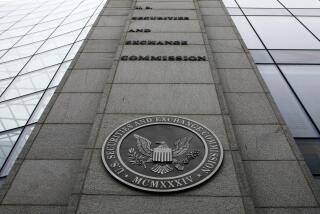China hedges its environmental plan
- Share via
BEIJING — On its way to supplanting the United States as the world’s biggest producer of greenhouse gases, China has proposed an ambitious-sounding program to combat global climate change. But the economy, not the environment, remains its top priority.
Much as President Bush did last week in pledging U.S. resolve to combat global warming, Chinese leaders Monday made it clear that neither the promise of cleaner skies nor a cooler globe would stand in the way of the country’s rapid economic development.
“The first and overriding priorities of developing countries are sustainable development and poverty eradication,” said the environmental plan issued by the National Development and Reform Commission. “China will continue to actively tackle climate change issues in accordance with its national sustainable development strategy in the future.”
The plan describes in some detail the threat to China from global warming, which it acknowledges is well underway. But Chinese officials continued to insist that the country was a relatively minor player in global climate change.
“It really baffles me to hear some people say that China is a major threat to ... global environmental security,” said the country’s top economic planner, Ma Kai, in a news conference with Chinese and foreign journalists. “I think that such an accusation is groundless and unfair.”
Ma said China had historically contributed little to global warming. Between 1950 and 2002, he said, the country only produced slightly more than 9% of the world’s greenhouse gases, despite having more than 20% of the global population. Moreover, he said, on a per-capita basis, China continues to produce far less greenhouse gases than more developed countries.
Given that, Ma said, “it is neither acceptable nor fair” to hold China to the same standards as developed countries that are largely responsible for the state of global warming today.
Although the report does not contain any more recent figures, the International Energy Assn. estimates that China produced 17.9% of the world’s carbon dioxide emissions in 2004, up from 5.7% in 1973. However, the agency also says that China’s emissions per capita remain well below world averages, and about one-fifth those of the U.S.
China’s report was issued two days before the start of the Group of 8 summit in Germany, where climate change is expected to top the agenda. And it came one day after China issued an energy conservation plan, which it asked local governments to “earnestly” implement.
In an indication of the high profile the government gave to the issue, Ma’s news conference was televised live nationally -- a rarity for such an event.
Wang Yongchen, an environmental activist in China who heads a nongovernmental organization called Green Earth Volunteer, generally praised the government initiative, but said she disagreed that low emissions in the past were an excuse for higher emissions now.
“It was true in the past that China’s economy stagnated while the West was developing,” she said in a telephone interview. “But it doesn’t mean that because of the past we should discharge a lot in the future. Since we can see the consequences already, we should do whatever we can do to control it.”
She added that it was fine to consider economic development as the country’s top priority, “if it is sustainable development.”
China was a signatory to the 1997 Kyoto Protocol on climate change, but that agreement exempted it and other developing countries from meeting targets for emission reductions. At his news conference, Ma chided Bush, saying that although the U.S. president’s recent remarks on global warming “are positive gestures, which we welcome,” they are no substitute for adhering to the Kyoto accord, which the U.S. refused to ratify.
The plan that China issued Monday calls for “significant achievements in controlling greenhouse gas emissions” and sets targets for increasing energy efficiency and stabilizing or reducing some emissions.
By 2010, the plan says, China should reduce energy consumption per unit of gross domestic product by 20%; raise the proportion of renewable energy in the national energy supply by 10%; hold nitrous oxide emissions to 2005 levels; and develop enough wind, solar, geothermal and tidal energy resources to offset carbon dioxide emissions by 60 megatons.
But the language of the document, which says only that “it is expected” that the goals will be met, suggests they may not be hard, or enforceable, targets.
“There is a vast gap between Beijing’s rhetoric concerning environmental protection and what actually transpires on the ground,” said Elizabeth Economy of the Council on Foreign Relations in an e-mail from New York. She is the author of a 2004 book, “The River Runs Black: The Environmental Challenge to China’s Future,” that is highly critical of the country’s environmental record.
“Chinese leaders frequently set bold targets ... but those targets are rarely met,” she said.
mitchell.landsberg @latimes.com
Gu Bo of The Times’ Beijing Bureau contributed to this report.
More to Read
Sign up for Essential California
The most important California stories and recommendations in your inbox every morning.
You may occasionally receive promotional content from the Los Angeles Times.












